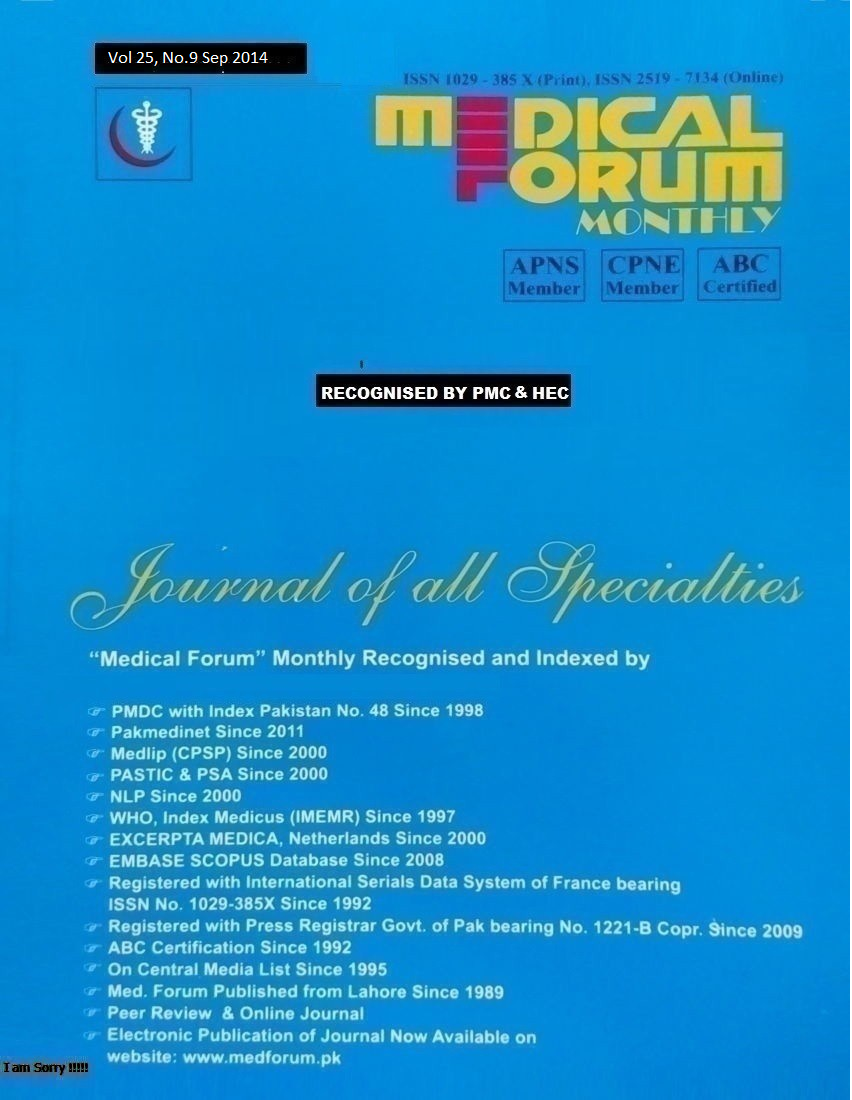
11. Frequency of C-Shaped Canals in Mandibular Permanent Second Molar among Hyderabad Population
1. Feroze Ali Kalhoro 2. Mujeeb-ur-Rehman 3. Fozia Rajput 4. Muhammad Arif Shaikh
5. Khawar Karim
1. Assoc. Prof. of Operative Dentistry, LUMHS, Jamshoro, Sindh 2. Dental Surgeon, LUH, Hyderabad, Sindh
3. Asstt. Prof. of Operative Dentistry, LUMHS, Jamshoro, Sindh 4. Asstt. Prof. of Operative Dentistry, LUMHS,
Jamshoro, Sindh 5. Postgraduate Trainee, Department of Operative Dentistry, Institute of Dentistry, LUMHS, Jamshoro, Sindh
ABSTRACT
Objectives: The objectives of this study were to assess the frequency and configuration of C-shapedcanal in mandibular second molar teeth.
Study Design: Descriptive type of study
Place and Duration of Study: This study was performed at the Dental OPD, Department of Operative Dentistry, Liaquat University Hospital, Hyderabad / Institute of Dentistry, Liaquat University of Medical and Health Sciences, Jamshoro from June 2010 to December 2010.
 Materials and Methods: A total of 100 extracted mandibular second molars were collected. The teeth were stored in 0.9% physiological solution (Otsuka Pakistan Ltd:) after extraction. Calculus and the remainder of periodontal tissue were thoroughly removed by a curette. All the samples were then rinsed with tap water and dried with air. Each tooth was opened to gain access of the pulp chamber by a small round bur (Mani, Japan). The pulp chamber was injected with the 0.5% methylene blue (BDH Gurrcertistan chemical Ltd: Poole England). The contrast color penetrated through pulp-down to the pulp orifice of the root canal. All the teeth were resected transversally at the cemento-enamel junction by a thin diamond disc (Mani, Japan) and the crowns were discarded. The canal orifices were located by DG-16 endodontic explorer. The same diamond disc were used for cutting roots transversally into two more sections at middle 3rd and 2mm above the root apex. All these three section were studied under operating microscope (66 vision tech: Co. Ltd: Sozhou, China) for anatomical properties mentioned in objectives.
Materials and Methods: A total of 100 extracted mandibular second molars were collected. The teeth were stored in 0.9% physiological solution (Otsuka Pakistan Ltd:) after extraction. Calculus and the remainder of periodontal tissue were thoroughly removed by a curette. All the samples were then rinsed with tap water and dried with air. Each tooth was opened to gain access of the pulp chamber by a small round bur (Mani, Japan). The pulp chamber was injected with the 0.5% methylene blue (BDH Gurrcertistan chemical Ltd: Poole England). The contrast color penetrated through pulp-down to the pulp orifice of the root canal. All the teeth were resected transversally at the cemento-enamel junction by a thin diamond disc (Mani, Japan) and the crowns were discarded. The canal orifices were located by DG-16 endodontic explorer. The same diamond disc were used for cutting roots transversally into two more sections at middle 3rd and 2mm above the root apex. All these three section were studied under operating microscope (66 vision tech: Co. Ltd: Sozhou, China) for anatomical properties mentioned in objectives.
Results: Thirteen C-shaped canals were found out of 100 mandibular second molars. 03 were of category I & II respectively and 07 were of category III.
Conclusion: The present study demonstrated that mandibular second molar teeth have variations in terms of number of roots, number of canal orifices and canal morphology. Therefore it cannot be assumed that these teeth always have two-roots and three canals. The overall prevalence of C-shaped canal was found 13% in the local population.
The difference to other studies may be attributable to racial differences and study model.
Key Words: Canal Configuration, C-shaped Canal,Endodontic Treatment, Mandibular Second Molar
